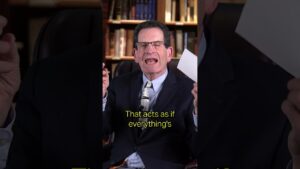The US debt crisis of 2024 has reached unprecedented levels, as the national debt continues to soar to record highs. Heavily burdened by economic challenges and mounting financial obligations, the country is grappling with the consequences of its escalating debt. As policymakers and analysts strive to understand the implications of this crisis, concerns arise about its long-term impact on the economy, government spending, and the overall well-being of its citizens. In this blog post, we delve into the factors contributing to the soaring national debt and explore potential solutions to mitigate further damage. Join us as we unravel the complexities of the US debt crisis and its implications for the future.
Introduction:
In the midst of a rapidly changing economic landscape, the United States finds itself facing a daunting challenge: the US Debt Crisis of 2024. The national debt has reached an all-time high, leaving policymakers, economists, and everyday citizens concerned about the long-term implications. In this article, we will review a video created by ClearValue Tax that sheds light on the severity of the crisis and explores potential solutions.
ClearValue Tax: Shedding Light on the US Debt Crisis
Heading 1: Understanding the US Debt Crisis
Sub-heading 1: The Current State of National Debt
ClearValue Tax’s video begins with an overview of the current state of the national debt. The numbers are staggering – trillions of dollars have been added to the debt over the years, leading to an unsustainable situation. The video emphasizes the urgency of addressing this crisis before it spirals out of control.
Sub-heading 2: Factors Contributing to the Crisis
The video highlights several key factors that have contributed to the US Debt Crisis of 2024. Factors such as increased government spending, demographic changes, and the economic impact of the COVID-19 pandemic have all played a role in exacerbating the crisis. ClearValue Tax provides a comprehensive analysis of these factors, painting a clear picture of the challenges ahead.
Heading 2: Implications of the US Debt Crisis
Sub-heading 1: Economic Consequences
The video delves into the far-reaching economic consequences of the US Debt Crisis. It explains how a ballooning national debt can lead to higher interest rates, reduced investment, and decreased economic growth. ClearValue Tax warns viewers of the potential impact that these consequences could have on their personal finances and the overall stability of the US economy.
Sub-heading 2: National Security Risks
Beyond the economic implications, the video also highlights the potential national security risks associated with the US Debt Crisis. It explains how a high national debt makes the country vulnerable to foreign creditors and weakens its negotiating power on the global stage. ClearValue Tax emphasizes the need for a strong fiscal position to ensure national security and protect American interests.
Heading 3: Potential Solutions
Sub-heading 1: Addressing Government Spending
ClearValue Tax emphasizes the importance of addressing government spending as a key solution to the US Debt Crisis. The video discusses the need for fiscal responsibility, reduction in wasteful spending, and long-term budget planning. It encourages viewers to voice their concerns to policymakers and advocate for responsible fiscal policies.
Sub-heading 2: Promoting Economic Growth
The video also emphasizes the role of economic growth in mitigating the US Debt Crisis. ClearValue Tax suggests that fostering a favorable business environment, investing in education and infrastructure, and encouraging innovation can help generate the revenue needed to reduce the national debt. It urges viewers to support policies and initiatives that promote sustainable economic growth.
Conclusion:
The US Debt Crisis of 2024 presents a significant challenge that demands immediate attention. ClearValue Tax’s video provides a comprehensive review of the crisis, shedding light on its causes, implications, and potential solutions. By understanding the severity of the crisis and exploring ways to address it, viewers can contribute to creating a more financially stable future for the United States.






